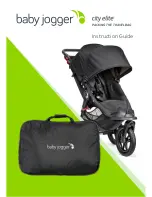
Over-temperature protection of device
When the internal temperature of the controller exceeds the set value, the charging power will be
automatically lowered or the charging will even be stopped, further slowing the rise in internal temperature
of the controller.
15. Protection Functions
Battery over-temperature protection
Battery over-temperature protection requires an external battery temperature sampling sensor. Charging
will be stopped when the battery temperature is detected to be too high, and will be automatically resumed
when the battery temperature drops to 5°C below the set value for 2s.
Input over-power protection
When the battery panel power is greater than the rated power, the controller will limit the charging power
within the rated power range to prevent excessive current from damaging to the controller, and the controller
will enter current-limited charging.
PV input side too high voltage protection
When the voltage at the input side of the PV array is too high, the controller will automatically cut off PV
input.
PV input reverse-connection protection
The controller will not be damaged if the polarity of the PV array is reversed and will return to normal after
the wiring error is corrected.
Reverse charging protection at night
Prevent the battery from discharging through solar battery at night.
16. System Maintenance
In order to maintain the optimal operating performance of the controller for a long time, it is recommended that
the following items are regularly checked.
Make sure that the airflow around the controller is not blocked, and remove any dirt or debris from the
radiator.
Take corrective actions timely after any fault or error is found.
Check whether there is corrosion, insulation damage, high temperature or burning/discoloring at terminals,
case distortion, etc., and repair or replace timely if any.
Check whether there is any exposed or broken wire or wire with poor insulation, and repair or replace timely
if any.
Check whether there is dirt, nesting insects or corrosion, and clean timely if any.
Warning: There is a risk of electrical shock! Before carrying out checks or operations above, make sure
that all power supplies for the controller are disconnected!
Any non-professional personnel is prohibited from carrying out such operations.
14.2 Installation steps
When connecting the system, the output voltage of the components may exceed the human body
safety voltage, therefore, use insulated tools and keep your hands dry.
The battery terminals on the controller can be connected either to a single battery or a battery pack.
The subsequent instructions are for a single battery, but they are also applicable to systems with a
battery pack.
Please follow the safety recommendations of the battery manufacturer.
The system connection cables selected shall have a current density ≤4A/mm
2
.
Ground the ground terminal of the controller.
When installing the battery, it is forbidden to reverse the battery connection, which may cause
irreversible damage.
19
20
Wiring and installation must meet the requirements of national and local electrical codes. Wiring
specifications shall be selected according to the rated current, generally, 5 A/mm
2
.
Step 1: Select an installation location
Do not install the controller in a place with direct sunlight, high temperature, or where water can easily
enter, and make sure the controller is well ventilated.
Step 2: Fix suspension screws
Mark the mounting position according to the mounting dimensions of the controller, drill two mounting
holes of suitable size at the two marks and fix the screws on the two mounting holes.
Step 3: Fix the controller
Align the controller fixing holes with the two pre-fixed screws to hang the controller up, and then fix the
two screws below.
Step 4: Open the front cover of the controller, wire, and then close the front cover.
Hot air
Cold air






























